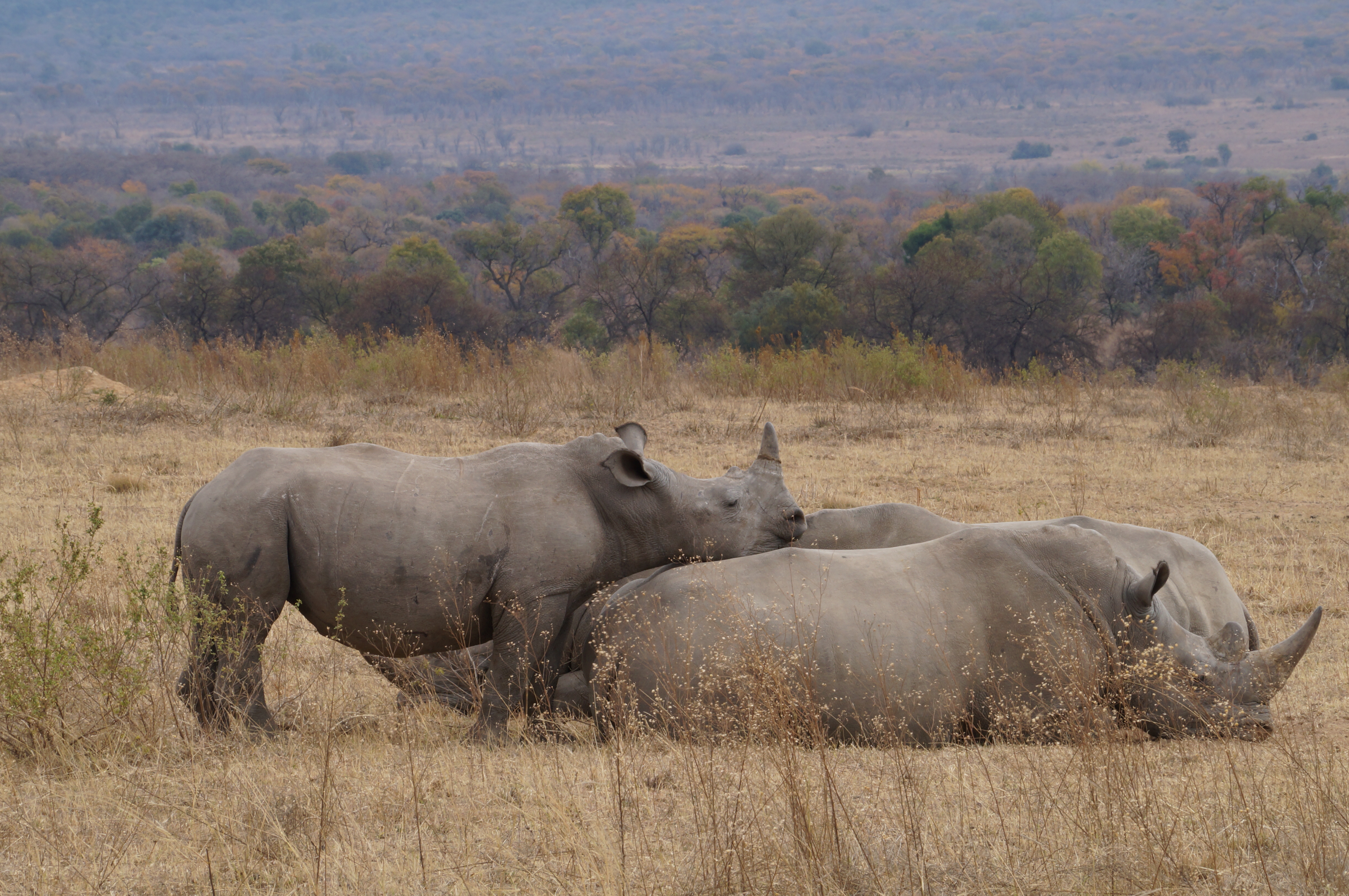Why do I care about the rhinos?
– Morty Ortega. Associate Professor, Wildlife Ecologist, Department of Natural Resources and the Environment, University of Connecticut.
While visiting a local elementary school in South Africa, one of my students asked a nine year old child about his dreams for the future and how he planned to carry them out. His answer was completely unexpected and left my student dumbfounded. The answer from that nine year old was: “when I grow up I want to have a lot of monies and for that I want to have a large rhino horn!”
When I was nine years old I used to read a lot about African wildlife thanks to a monthly magazine called “Fauna” published by a Spanish ecologist. The magazines were full of information and plenty of wonderful photos that transported me to the African plains. I learned so much about the African bush at a early age that when I visited the bush for the first time in my late 40’s everything from trees to birds to the large mammals sounded very familiar. That early education has made me respect African wildlife since my early years. I still remember very clearly great discussions about secretary birds and how this beautiful bird used the wind currents to fly and look for prey. I also learned about species that at the time were put in special lists for their protection, among them were the wild dogs, the elephants and the rhinos.
The Spanish ecologist brought to me a very positive view of the wildlife. I do not ever recall reading about poaching in the Fauna magazine. This positive view was the one that attracted me to become an ecologist as well as a conservationist, so I could study the animals that were photographed in those pages. When shown the beauty of the magnificent animals such as elephants and rhinos you simply appreciate them for what they are, that essential part of nature that keep things in balance. When I saw a black rhino for the first time in the wild I was in awe… I could not take my eyes off of this extremely large mammal. He was about one hundred and fifty meters away from our vehicle, so using my binoculars I visually inspected him from head to toes. I could not believe my eyes that I was viewing such a magnificent living creature. My only wish at the time was to see more of them, but knowing that they are solitary animals, I had to be happy with that sight for the day. I may have taken over two hundred pictures of him.
About ten years ago several students and I were staying at an old farm house on a game reserve in South Africa that have been reconditioned for our stay. The house did not have a fence since no predators were around. This was perfect because we had many animals come very close to the house. One afternoon we were sitting discussing the ecology of some plants, when one of the students looked up and saw a rhino walking on the road close to the house. Then we saw another three rhinos. I knew immediately that it was the white rhino because they were walking in a group. We all got excited and at the same time a bit scared thinking that these large animals were going to do some damage to the house if not to ourselves. One of the students even went inside of the house! The rest of us froze, and there, in front of us, not further than twenty meters away, four gentle giants walked by. It was a wonderful sighting that we talked about for several days after. None of us grabbed a camera to take a picture we simply enjoyed their presence.
In the present time, I have been observing rhinos to teach students how to do research on them. Along with one of my students, we have spent about twenty hours of observations. We have been able to observe them in groups feeding on the short grasses and making their way into the long thatching grass to completely disappear, to be found a couple of hours later in the same spot where they went into the tall grass. We have also observed them taking very long naps where they constantly move their ears to stay alert. They seem to have a deep sleep, but their ears may tell us that they are still listening to every movement in nature surrounding them. We have also seen a female with a calf and her interaction with a large male. As a mother she does not want the large male to get close to the calf. She lets him know the he is not welcome within five meters of the calf.
We have also observed a large territorial male making his rounds and marking the boundaries of the territory. There is nothing that will distract him from that mission. He concentrates on a route, and every five to seven minutes he scratches himself against a short bush, and then sprays the bush with urine. We have followed him for up to two hours while doing this activity to later stop at a specific place to start eating for the next hour or so. The day then culminates with a solid one to two hours of deep sleep.
Perhaps the most fun day of observing these gentle giants was when we watched four sub adults. Among them was a female interacting with three males. They had been walking searching for food in the morning, taking about an hour to eat as much grass as they could take, to later have about a two hour nap. In the meantime we also observed how the other three rhinos were bullying the smallest and youngest of them. They would not allow him to get to the best grass or the “best” spot to lie down and nap. He was being harassed by pushing and horning him. It was a tense day! About an hour before sunset they encountered a muddy pond. They had plenty of water and one of the large males started to play with mud. He first put his horn deep in the mud and followed by lying down and taking a mud bath. When he was almost done a second male came to see him and started to push him over, then the female got in on the action. The smallest male would stay away until the males got up from the mud and started horn and push each other. The female did not wait to get into the action and started the same game. Within the next few minutes they were chasing, pushing and horning each other. It was such an amazing moment to see these giants run at full speed and suddenly stop to confront the one that was running next to him or her. Even the small male got in on the action. This play time lasted for about 45 minutes until they found a new mud hole and got in it. After that they were quiet. We read this behavior as a relaxing exercise after a very tense day.
Now I wonder if that nine-year old student would want to have a rhino horn, if he had been able to see the behavior of these rhinos for a couple of days. To be able to observe and enjoy their beauty and how these young animals play in a similar fashion as a nine-year old does in the schoolyard. Would this knowledge of these few animals make a change in the way he sees and thinks about them? Would this student change his mind on owning a horn and instead think that it would be better to protect the rhinos for what they are?
I think that anybody that spends sometime observing these animals for a day or two and learns about them will discover that they are such a beautiful part of nature. At the same time a good education program that teaches the local people the tremendous value of these large creatures will in the long run help not only the rhinos but also the people that live near them. It is time to start strong educational programs about the intrinsic value of the big five in the place where they live.

